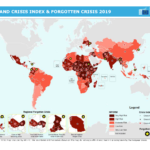
One in every 70 people worldwide is caught up in a crisis. Crises tend to last longer and be driven by conflict. In 2019, nearly 132 million people across the world will need humanitarian assistance. The United Nations and its partner organizations aim to assist 93.6 million of the most vulnerable with food, shelter, health care, emergency education, protection and other basic assistance, according the Global Humanitarian Overview 2019 (GHO) presented by Emergency Relief Coordinator Mark Lowcock today in Geneva.
Funding requirements for 2019 amount to US$21.9 billion. This figure does not include the financial requirements for Syria, which will be confirmed upon finalization of the 2019 Syria Humanitarian Response Plan. It is expected that total requirements, including those for Syria, will be comparable to current requirements of around $25 billion.
The average humanitarian crisis in which there is a UN-coordinated response now lasts more than nine years, the companion World Humanitarian Data and Trends 2018 analysis by OCHA, also released today, shows. This is an increase from an average length of 5.2 years in 2014. This year, nearly three quarters of people targeted to receive assistance in 2018 are in countries affected by humanitarian crisis for seven years or more.
“The humanitarian system today is more effective than ever,” Mr. Lowcock said. “We are better at identifying different groups’ specific needs and vulnerabilities and quicker to respond when disaster strikes. Response plans are now more inclusive, comprehensive, innovative and prioritized.”
